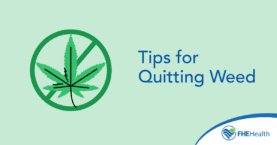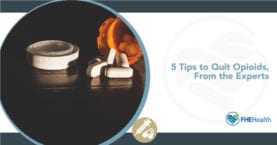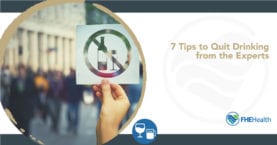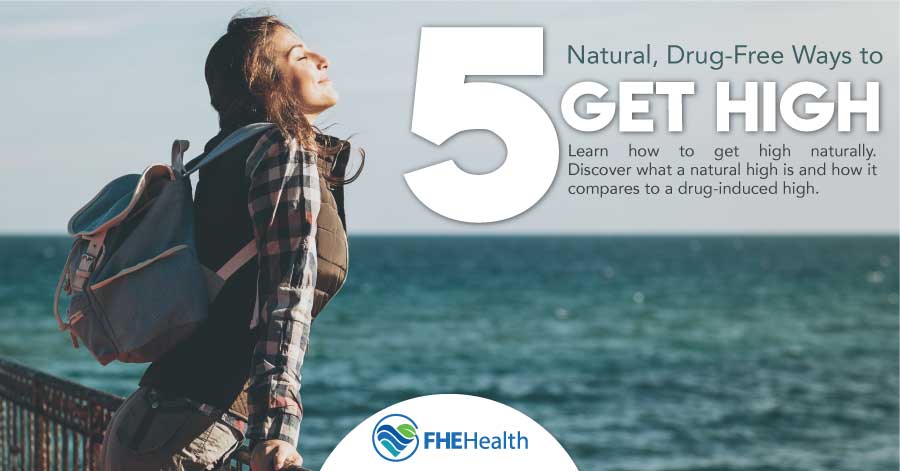
|
|
When we think of “getting high,” we typically associate this state with drug use. However, it’s possible to experience a similar sensation without resorting to drugs.
Achieving a natural high involves participating in activities that stimulate the brain’s feel-good chemicals, including dopamine. This chemical, also known as the “pleasure neurotransmitter,” responds to a variety of feel-good experiences that don’t demand drugs or alcohol. The key lies in discovering activities that bring you joy and pleasure.
For those in recovery from addiction, chasing natural highs can help minimize the temptation to use substances. Studies indicate that certain natural highs can help stimulate the neurotransmitters that create endorphins, or the positive, feel-good hormones the body craves. The result: better outcomes for people in recovery.
Whether you’re recovering from a drug addiction or you’re looking for ways to relieve stress or improve your quality of life, pursuing the following seven natural highs can be particularly beneficial.
What Is a High?
The term “high” refers to the intense euphoria associated with taking an addictive drug. The user suddenly feels happy and relieved of all cares, anxieties, and stresses. Depending on the drug, in some cases, they may have a very pleasurable sensation of release and relaxation; in other cases, they may get revved up and feel totally charged, capable of anything, and motivated to conquer the world.
People who are high may become very free-spirited, engaging in reckless behavior. They may laugh a lot. Other people may experience a more subdued high. In this case, they feel numb and less capable of feeling a range of emotions, resulting in a sense of being relaxed and at ease even when situations around them are worrisome.
In most of these cases, the high is very intense but short-lived— the point being that it’s a completely artificial rush and impossible to sustain without returning over and over again to the addictive substance. And, for many people, this experience is the addictive hook that keeps them coming back to drugs and alcohol.
What Is a Natural High?
A natural high, on the other hand, is not artificial or drug-induced, nor should it pose the same dangers of overdose and other serious health risks. When you learn how to get high naturally, you may be able to achieve many of the same positive, happy feelings without the potential for addiction. Creating a sensation that is similar to being high without having to use drugs may sound unusual— but it’s not impossible.
The way to achieve a natural high is to do something that stimulates and increases the brain’s natural reserves of feel-good chemicals like dopamine. Dopamine, also known as the “pleasure neurotransmitter,” responds to a variety of feel-good experiences that don’t demand drugs or alcohol. What’s key is to find the experience(s) that give you a sense of pleasure.
Remember that drugs hijack the brain to change its function for a different goal. While that comes with negative consequences, other methods can change your brain for the better (and still be pleasurable). Here are seven ways to feel euphoric naturally, boosting your mood and benefiting your well-being.
1. Physical Exercise
Exercise is one of the most effective ways to increase feel-good hormones. While this effect is often referred to as a runner’s high, virtually any form of exercise that taxes the body can boost endorphins and create a sense of well-being. If you don’t have a lot of experience with exercise, try starting gradually and build up from there.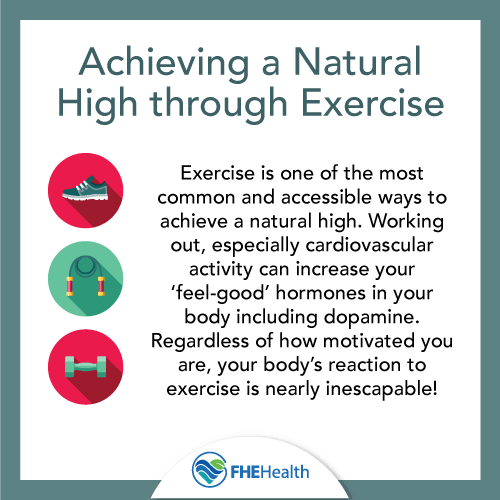
During rigorous exercise—especially cardiovascular and aerobic workouts—the brain releases endorphins along with adrenaline. Both hormones encourage the body to keep going and stimulate a sense of euphoria. If you don’t have a lot of experience with exercise, try starting gradually and build up from there with one of these outlets, among others:
- Yoga
- Going for a run that doesn’t exhaust your body
- Swimming
- Brisk walking
- Boxing
The Mechanisms Behind the “High”
After an exercise session, many people report feeling a deep, relaxing state of euphoria and feel a reduction in anxiety and stress. This feeling likely comes from the body releasing molecules called endocannabinoids. These messengers help maintain balance in the body, regulating everything from appetite and immune responses to pain management and mood. Their presence in the bloodstream makes the individual feel more relaxed and less anxious.
Practical Tips for Maximizing the Effect
To maximize the effect of an exercise-induced high, consider the following strategies:
- Participate in exercise for at least half an hour
- Aim for a pace and intensity that challenges your body but is sustainable
- Keep your body challenged by incorporating a variety of activities
- Pay attention to other healthy habits, including hydration, proper nutrition and adequate rest
2. Meditation and Mindfulness
While some people believe meditation works by slowing the brain down, creating calm and reducing stress and anxiety, the truth is that meditation in itself releases endorphins. Those who meditate regularly often report a more lighthearted mood, a sense of control over their emotions, and greater resilience to stress.
Different Techniques to Explore
For those with fast-paced lifestyles and busy schedules, carving out time to meditate can seem unrealistic. Additionally, many of us have become accustomed to constant stimulation from our smart devices, making it challenging to unplug and develop the discipline needed for distraction-free practices such as meditation. Fortunately, there are a variety of techniques to explore that provide opportunities to enjoy this practice, including:
- Guided meditation: a form of meditation in which you listen to a guide leading you through the process, often by describing relaxing scenarios
- Mindfulness breathing exercises: an option that focuses on being aware of your breathing; it may involve counting breaths, quieting the breathing and focusing on breathing rather than letting the mind wander
- Body scan meditations: similar to mindfulness breathing, body scan meditation involves directing your focus to specific parts of your body, increasing your awareness of sensations in the present moment
How to Incorporate Meditation Into Daily Life
With consistency, many people see the profound benefits of meditation within eight weeks. However, many people notice a change in their mood and stress levels after just one week. To incorporate this discipline into your daily life, follow these practices:
- Find a quiet space and schedule your meditation for a time when you’re unlikely to be interrupted
- Aim to meditate for 10 minutes per day (longer sessions may bring greater benefits)
- Find an app to help you develop focus
3. Engaging in Creative Activities
According to a study out of New Zealand, participating in creative activities contributes to what researchers called an “upward spiral” of emotional well-being and positive emotions. When we are involved in a creative activity, our brains release dopamine, a hormone that regulates pleasure and motivation and acts as a natural antidepressant. Creative expression also brings a sense of accomplishment, further supporting emotional wellness.
Psychological and Emotional Benefits
Nearly four decades ago, psychologist Mihaly Csikszentmihalyi recognized and named the psychological concept of “flow,” a highly focused mental state that’s often associated with creative activities. His research explored the way the brain changes when it enters a flow state, in which it maximizes efficiency and effectiveness, minimizes distractions and eliminates procrastination.
In 2005, Csikszentmihalyi and fellow researcher Jeanne Nakamura interviewed artists, athletes and chess players to find out why they participate in their hobby even though it doesn’t yield a tangible reward. They found that all participants enjoyed the feeling of being caught up in their activity to the extent that they would all go to great lengths to experience that feeling again.
Tips for Getting Started
To enjoy creative pursuits, keep these tips in mind.
Let go of perfectionism. You don’t have to excel at a hobby for it to be worthwhile or to reap the emotional benefits. As philosopher G.K. Chesterton once said, “Anything worth doing is worth doing badly.”
Forget about labels. Many people label themselves as “not creative.” This may be based on a mental picture they have of themselves, or it may come from internalizing something someone else said. Either way, letting go of that label can help them enjoy creativity’s rewards.
Try something new. Look for ways to branch out, whether it is learning to cross-stitch, downloading a digital painting and drawing app, or signing up for a dance class.
Reconnect with old interests. Reacquaint yourself with former hobbies and artistic pursuits you once enjoyed, such as coloring, crafting or playing an instrument.
4. Social Connection and Laughter
Socializing with people you love causes your body to release hormones that reinforce happiness and bonding, including dopamine, oxytocin and serotonin. This chemical cocktail promotes an increased sense of well-being, not only strengthening your relationships but also enhancing your mental and physical health.
The Science of Laughter and Social Bonds
The idea of laughter as medicine dates back to the 1300s when French surgeon Henri de Mondeville experimented with using humor to manage post-operative discomfort. While we’re fortunate enough to have more effective measures today, Mondeville may have been on to something – research shows that laughter releases endorphins, the body’s natural painkillers and stress relievers.
Whether from funny jokes in a movie to just remembering good times with friends, laughing triggers the brain’s “feel-good” hormones. Laughter helps people feel good nearly instantly, even faster than drugs and alcohol.
Strategies for Cultivating Social Connections
By being intentional in setting aside time for friends and family, you can enjoy an improved sense of well-being. Some strategies to incorporate include:
- Scheduling weekly meet-ups
- Seek out opportunities for building new relationships, including participating in community volunteer efforts, joining a club or enrolling in a class
- Prioritize in-person interactions over texting or engaging on social media
5. Spending Time in Nature
The American Psychological Association links time in nature to a variety of benefits, including reduced stress, better mood and improved attention span. These benefits come from time spent in green spaces (think forests and parks) as well as blue spaces (near water).
Benefits of Nature Exposure
Exposure to nature correlates with a reduction in stress, depression and anxiety, offering a drug-free way to manage your mood. In a 2019 study, researchers observed that spending time in nature increases the individual’s perceived happiness level and sense of well-being and improves their sense of meaning and purpose in life. In fact, while in-person experiences are best, researchers also have evidence that seeing pictures of nature, listening to nature sounds or experiencing nature through virtual reality has some benefit.
Tips for Making the Most of Nature
To get the benefits of spending time in nature, incorporate these tips:
- Schedule regular nature outings, such as visits to parks
- Incorporate nature into your daily routine by gardening, watching a sunrise or going for a walk
- When you’re in a natural setting, practice mindfulness by paying attention to sights, sounds and smells
6. Intimacy
Being intimate with someone you care for can help create the same sense of high you may get from using drugs. A study from the University of Rhode Island found sex and sensual touching release endorphins in the brain.
Physical touch itself, as long as it is in a positive manner, can be a significant way to reduce stress overall. This can be more intense if a person combines those physical sensations with emotions of love and respect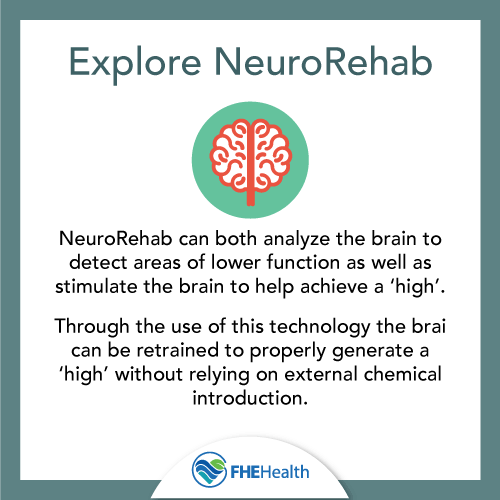
7. Neurofeedback
Neurofeedback is a relatively new method for stimulating a sense of well-being. Neurofeedback works to calm overactive brainwaves and triggers the release of endorphins. It often helps people manage their brainwaves in order to achieve greater calm, more focus, etc.
Doctors often recommend neurofeedback for those who have experienced trauma. It can also help to reduce anxiety and depression, two common reasons people turn to drugs and alcohol.
The Drug High vs. the Natural High
Comparing a natural high to a drug high can be difficult. Many people chase the manufactured high of drugs when they can achieve a natural high safely and still feel the same sense of relief, happiness, and enjoyment. The best high is one you can control and remember.
A person who is high on a drug may have limited functions and may not remember what occurred around them. By comparison, those with a natural high are sure to remember what happened. The feelings of euphoria can range as widely with natural highs as they can with drug-induced highs.
Another issue with substance abuse created high is anhedonia. This symptom describes the inability to feel joy. When the brain has been short-circuited and fed an artificial high enough times, it can be difficult for the user to experience joy on their own. This symptom can fade but it creates an additional barrier to people seeking help.
For those in recovery from drug addiction, chasing natural highs can help reduce the temptation to use drugs. Studies reported in the U.S. National Library of Medicine found that certain natural highs can help stimulate the neurotransmitters that, in turn, create endorphins (positive, feel-good hormones) the body craves. The result: better outcomes for people in recovery.
How Drugs Deliver Their High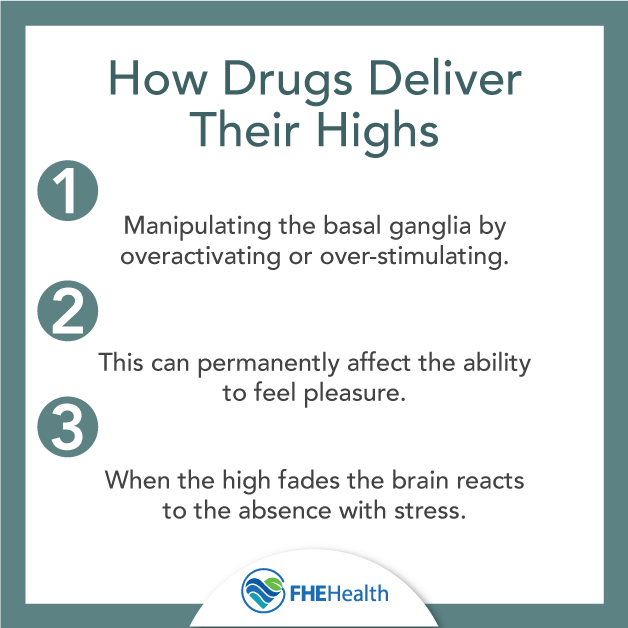
Drugs that deliver a euphoric-like high are able to do so because of how they interact with the brain. More specifically, and as the National Institute on Drug Abuse has put it, these drugs change the way that the brain’s neurons work, including how they send and receive information and process and exchange signals via neurotransmitters. Take marijuana, for example. Marijuana actually mimics the body’s natural neurotransmitters, with the result that abnormal messaging occurs.
In order to deliver their intense high, addictive drugs do more than change how neurons and neurotransmitters work (although this change is a necessary precursor to the sequence that comes next). When an addictive drug interferes with the brain’s normal messaging signals, the basal ganglia (circuitry in the brain that regulates pleasure) does not receive the proper message signals and over-activates, creating an intense, highly addictive rush of pleasure. Over time, a person who keeps using the drug(s), will soon find it hard to feel pleasure from anything other than the drug(s) they’re taking.
Let’s not forget the final sequence of events in the brain: When the high fades. The intense dopamine surge that sent the basal ganglia into overcharge now must end. But its end sends the brain—and, in particular, a region of the brain known as the “amygdala,” which regulates emotions—into a more reactive state of stress, anxiety, and irritability. This sense of stress and discomfort only reinforces the desire to get high again, creating the perfect storm for addiction to take hold.
How to Feel Euphoria Naturally: Explore Healthy Alternatives to Drugs
If you’re looking for a way to get a natural boost in your mood, exercising, meditating, pursuing creative endeavors, socializing and laughter, spending time in nature, intimacy, and neurofeedback can provide a natural high. By experimenting with the options that appeal to you the most and maintaining a balanced lifestyle, you can improve your well-being.
Additionally, if you’re tired of getting high on drugs—and you’ve tried unsuccessfully to embrace natural highs like those above—treatment can help you experience the joy of a life free of drugs. Contact FHE Health today to learn how we can help.
